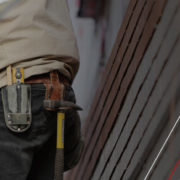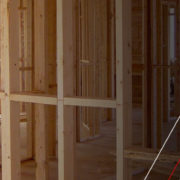Building upwards will bring big benefits
With the government’s recent revisions of the National Planning Policy Framework (NPPF), it is now easier for homeowners and developers to create homes above existing residential and commercial properties. Since these revisions, rooftop home developers have received funding to generate much-needed affordable homes across the UK.
Insulation Express have uncovered the benefits of building upwards, from saving the Green Belt to overcoming the current housing shortage, and why this could create a future trend in construction.
Building upwards could heighten the development growth in dense cities
The shortage of available properties has long been recognised as an issue affecting our society but building upwards could ease the demand in areas with less space and at a faster pace. In dense urban areas where there is a lack of development sites, rather than forcing people out of the city, upward extensions could allow people to live and work in city centres.
To see where there’s a demand and opportunities for development growth, Insulation Express analysed just how many people share a sqm in cities of the UK.
Surprisingly, Brighton and Hove has 10 people packed into just a sqm, even more than London (seven people per sqm). In such a densely packed city, there are limitations on where to build, but skyward extensions could be hugely beneficial in this seaside town.
There has also been a wider focus on the capital of the housing crisis, London, with seven people per sqm. Most London residents have the option of crippling rent prices or long commutes from outside London. According to the developers a whopping 180,000 rooftop homes could be created in London, even housing up to 720,000 people.
Notably, Liverpool is one of the least dense cities, with just four people sharing a sqm, yet the city has the most expensive plots.
Upward extensions could boost the productivity of the UK’s construction sector by 50%
Research has identified a critical challenge in the industry – a shortage in the workforce, and this was before the UK voted to leave the EU.
As of May 2019:
- The total workforce is made up of 90% UK nationals, 7% EU nationals and 3% non-EU nationals.
- Construction workers in the UK are ageing – Nearly half (47%) of UK nationals are aged 45 and over.
- In comparison, non-UK nationals are much younger, with those aged 45 years and over making up 18% of the workforce.
Unfortunately, once we leave the EU, this shortfall could end up being worse as it becomes difficult for EU workers to live and work in the UK.
This shortage coupled with the fact that the UK’s construction industry already lags behind in productivity (15% less than Germany and 25% less than France), means the UK urgently needs to solve its issues.
But rooftop homes could be the answer. Generally, upward extensions use the modular construction process. This means building the home off-site before craning the property on top for less disruption. These techniques are massively quicker and require less workers. With new legislation making it easier to gain planning permission for building above, we could see the UK’s construction productivity grow by 50%.
How building up could stop the rapid increase (34% in two years) of homes on the green belt
The Green Belt is the neighboring countryside for more than 30 million people, covering 13% of the land in England – 1,639,560 hectares to be exact. However, the pressures on Green Belt land are mounting – there are calls for reforms to release the land in the UK to ease the housing demand.
For many, the loss of Green Belt land is also the loss of an escape from urban life, that’s why this countryside is generally protected. While building on this land is supposed to be extremely difficult to get planning permission. But since 2013, there has been a 62% increase in the loss of greenfield Green Belt (part of the Green Belt that previously, had not been built on before). Just in 2017/18 alone, there was huge 34% increase of residential units on Green Belt land.
The number of homes proposed to be built on Green Belt land has increased from 425,000 in 2017 to 459,000 in 2018, that’s an 8% rise in just one year. With the increased demand of homes needing to be built threatening our Green Belt further, one solution could be building above. London needs 66,000 homes a year, yet 22% of the land is designated Green Belt – upward extensions could allow developers to alleviate housing pressures without restrictions.
Rooftop homes can reduce construction waste by up to 90%
The majority of rooftop developers use modular homes to create these extensions. This is a major advantage in itself, especially to our environment. Why? Modular homes use marginally less materials than traditional construction, which makes them quicker to build and less damaging to the environment.
Traditional methods of construction normally use a vast array of materials (400 million tons each year), much of which has a negative impact on the environment, due to the emissions created when manufacturing these materials. But another damaging effect of this is the waste, the industry wastes 120 million tons of material per year and accounts for almost a third of the UK total of waste production.
Off-site construction for upward extensions helps the industry battle this. Modular homes use less materials in general and with modular construction being built off-site, in a controlled environment, using standard sizes and even layouts, this means this method can reduce waste by up to 90%.
The challenges of building upwards
Even with all these advantages, there are certain limitations, mainly because it means you are building on top of an existing structure. This presents various design challenges and you need to ensure the existing property is structurally sound. Not least that you have to generate a solution that creates a useful space without interfering with the function of the existing development.
Developers also need to abide to planning regulations despite the new planning permissions for building upwards. Neighbouring properties have the right to object to proposed building plans if they believe it infringes on their rights, which could mean anything from lack of light to nuisance, this all falls under the Party Wall Act of 1996.
Source: buildingproducts.co.uk













Leave a Reply
Want to join the discussion?Feel free to contribute!